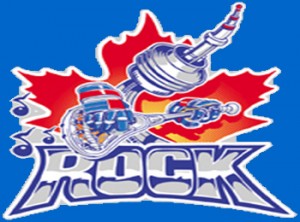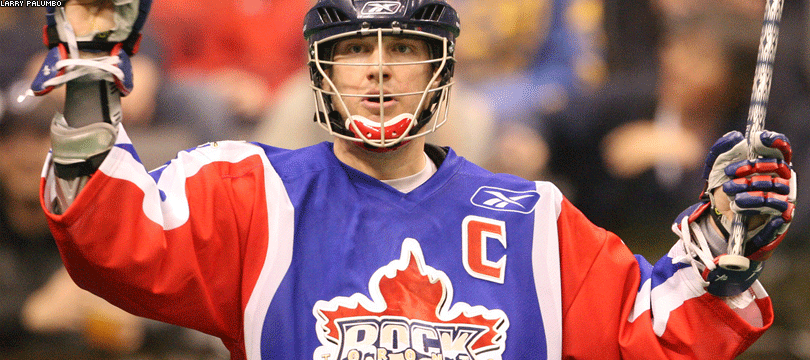What is the best team in Toronto?
 Toronto sports fans are lucky – they live in one of the few cities in North America to have a professional sports team in all four major leagues.
Toronto sports fans are lucky – they live in one of the few cities in North America to have a professional sports team in all four major leagues.
Well, okay, there isn’t really a National Football League team here, but the Buffalo Bills play two games a season at the Rogers Centre and there are the Toronto Argonauts, historically the Canadian Football League’s most successful team. Football is definitely covered in Canada's largest city.
But I digress. Toronto has eight professional sports teams, on a par with, or better than, the 14 American cities that have teams in the NFL, National Basketball Association, Major League Baseball and the National Hockey League.
Unfortunately, this creates a weird competition amongst the teams as they vie for fans attention. I was reminded of this weeks ago when a friend of mine from senior school posted on Facebook “So glad the Leafs suck more than the Raps. At least the Raps have upside”.
Of course, this was before the Raptors embarked on a Cavaliers-esque 13-game losing streak, but the comment got me wondering: what is the best team in Toronto? Which team does the best job of representing a city spoiled for choice?
Here are all of the city’s professional sports franchises, in order of winning percentage over the past two years.
| Team | This season | Last season | Cumulative |
| Rock | .667 (4-2)* | .562 (9-7)† | .615 |
| Blue Jays | .525 (85-77) | .463 (75-87) | .494 |
| Marlies | .470 (24-20-7)* | .413 (33-35-12) | .442 |
| Nationals‡ | .250 (3-9) | .583 (7-9) †¥ | .417 |
| Maple Leafs | .426 (23-26-5)* | .366 (30-38-14) | .396 |
| Raptors | .269 (14-38)* | .488 (40-42) | .379 |
| Argonauts | .500 (9-9-0) † | .167 (3-15-0) | .336 |
| Toronto FC | .300 (9-13-8) | .333 (10-11-9) | .317 |
Notes: * - Season currently underway.
† - Made the playoffs.
¥ - Won championship.
‡ - It was announced in the offseason that the Toronto Nationals have moved to the bustling metropolis of Hamilton, Ont., for 2011.
What’s most apparent in this chart is that it’s good to be a fan of lacrosse in Toronto. Especially if you live in the western part of the Greater Toronto Area, since Major League Lacrosse’s Toronto Nationals – the most recent champions in the city – are moving to nearby Hamilton.
But if you want to see a Toronto-based team do well in the regular season and go deep in to the postseason, you’d better pick up the nuances of lacrosse. The Rock are the best team in the NLL this year after losing a close game in the league championship last season.
Further, six of Toronto’s last nine championships have come from lacrosse teams, with the Rock contributing five and the Nationals bringing home the Steinfeld Cup two summers ago. The other three are all thanks to the Toronto Argonauts winning the Grey Cup in 1996, 1997 and 2004.
It’s also worth noting that attendance is seemingly unaffected by a team’s success.
Most Torontonians would immediately twig to the fact that the Maple Leafs, the city’s fifth best team, remain the most popular franchise while the Blue Jays – ranked second – had serious attendance problems last summer.
But what I find most striking is that Toronto FC, the team with the most passionate fans, has the worst record of Hogtown’s professional sports franchises.
In any event, I think this is an interesting exercise that would test perceptions of Toronto’s sports teams. Tell me: were there any surprises on this chart for you?
A funny thing happened on the way to the video feature…
EDIT: The Globe and Mail has now uploaded my video on lacrosse goaltender pads. You can view it here.
 A few weeks ago Neil Davidson, my editor at the Canadian Press, suggested I do a video feature story on the padding an indoor lacrosse goaltender wears. We agreed that having a professional lax goalie put on all his gear and demonstrate how it protects him would be perfect for a short, two-minute piece.
A few weeks ago Neil Davidson, my editor at the Canadian Press, suggested I do a video feature story on the padding an indoor lacrosse goaltender wears. We agreed that having a professional lax goalie put on all his gear and demonstrate how it protects him would be perfect for a short, two-minute piece.
As a result, I spent last Saturday morning in the bowels of the Air Canada Centre interviewing Pat Campbell, the back-up goaltender of the National Lacrosse League's Toronto Rock. Pat was incredibly nice and a great interview. We shot some really good footage of him putting on his gear and explaining each piece - including some funny asides about his personal superstitions - as well as a general dicussion in the stands about being a goaltender.
Neil then suggested I turn my extra quotes from Pat into a written feature story. After all, most of the Canadian Press' clients are smaller dailies across Canada that don't carry video on their websites.
Both the video and the article were released late yesterday, with the story popping up in several places online, including TSN.ca and the Winnipeg Free Press. I'm still searching for the video online, but I'm sure it'll pop up at some point.
"There’s a simple reason why an indoor lacrosse goalie looks like, in the words of the Toronto Rock’s Pat Campbell, the Stay Puft Marshmallow Man.
A lacrosse shot can go faster than the average hockey slapshot — and usually is fired from closer range.
“You just can’t be afraid of the ball,” says Campbell, an 11-year veteran of the National Lacrosse League. “I often have to convince myself that it’s a rubber ball, not a bullet." - Kitchener-Waterloo Record, Feb. 2nd 2011.
Doyle-Ratcliff trade benefitted both the Rock and the Stealth
There was a rare animal on display during last Saturday’s National Lacrosse League Champion’s Cup: a perfectly equal trade.
The Washington Stealth rallied past the Toronto Rock for a resounding 15-11 victory. The championship was the franchise’s first ever NLL title, and was the perfect cap to the team’s inaugural season in Everett, Washington after relocating from San Jose, California.
The Rock led 7-5 at halftime and kept it up well into the third quarter. Toronto was up by four with 13 seconds left in the third, but the Stealth had two quick goals to end the period - highlighted by an empty net goal by defenceman Eric Martin with 0.2 seconds left.
Washington went on to score six consecutive goals in the final quarter to secure the Champion’s Cup.
It was a fitting end to a season that had effectively begun with all-star forward Colin Doyle being traded from the Stealth to the Rock in exchange for Lewis Ratcliff, Tyler Codron and Joel Dalgarno.
The trade was a homecoming for Doyle, who grew up in the Kitchener-Waterloo area near Toronto. He had played with the Rock at the start of his career, winning five championships and earning Playoff MVP honours in 1999, 2002 and 2005. He was also the league MVP in 2005 at the zenith of Toronto’s lacrosse dynasty.
His reappearance in Toronto helped the Rock to a 9-7 regular season record and the Eastern Conference title, a major improvement over their 6-10 record in 2009 and no postseason berth.
Ratcliff, who hails from London, England but resides in British Columbia, responded well to playing on the West Coast. He scored a league-best 46 goals and was second in scoring with 97 points during the regular season.
His impact was most apparent in the championship game. Ratcliff’s five goals were rewarded with the NLL Playoff MVP honours and, of course, the Champion’s Cup itself.
Although there’s no doubt that the Toronto Rock wanted to win the NLL title, there can be no regrets about trading Ratcliff, Codron and Dalgarno for Doyle. It benefitted both sides and was remarkably even.
How I fell in love with lacrosse
I can still remember the exact moment when I fell in love with lacrosse. My godfather had given me tickets to the Toronto Rock as a Christmas present. They were the newest team in the National Lacrosse League, having played in Hamilton the previous season as the Ontario Raiders, and this was their home opener.
I’d heard of lacrosse, but never seen it played. But, hey, it was at Maple Leaf Gardens, a treat by itself. It was easy to persuade my friend Ruben to come along.
As the fourth quarter wound down, Toronto’s goaltender Bob “Whipper” Watson stopped a shot and came out of his crease to pass to a streaking “Speedin’” Stevie Toll. As Watson released the ball, one of the Buffalo Bandits cross-checked him in the back of the head and knocked him out cold.
I seem to remember Toll scoring on the play, but I was distracted by the mayhem that exploded around me.
As players paired off to fight, the crowd chanted “BUFFALO SUCKS”. The offending player got free of his dance partner (possibly after knocking him out as well) and ran around the floor, giving the finger to the crowd. Fans tried to climb over the boards to get at him while the referees and arena security tried to gain control of the situation.
It was the greatest thing I’d ever seen.
Ruben and I didn’t know it at the time, but we were watching the birth of a dynasty. The Rock would win the championship that year, and win another four in the next five years. They’d win their division from the team’s inception in 1999 and every year after that until 2005.
For a championship starved city like Toronto, it was incredible.
Ruben and I didn’t understand half of what was going on in that first game, but sitting in the Reds of Maple Leaf Gardens we decided that we were going to pick up the sport.
We went to more games that season and got a small petition together to start a team at our high school. Unfortunately, the head gym teacher told us that he just didn’t have the staff to coach another team and our dreams were dashed.
In my second year at the University of Toronto I ended up playing a few minutes with the varsity team, but I was much too late to the sport to be any good. The next year I became an assistant coach, and became more and more involved in the administration of the game.
I watched as many games as I could, read magazine and internet articles, played intramurals and gradually began to understand the Xs and Os of lacrosse.
Eventually, I became the Director of Communications for the Canadian University Field Lacrosse Association and interned with the Toronto Nationals, a professional field team that plays in Major League Lacrosse. I’ve been lucky enough to meet greats like Gary Gait, Colin Doyle and Dan Dawson, as well as interview Paul Gait and the legendary Syracuse University coach Roy Simmons Jr.
Even though I'm relatively new to the sport, everyone I've ever met in the lacrosse world has been nothing but kind, friendly, and accommodating. It's the most accessible professional sport that I can think of, with fast action, cheap tickets and athletes that the average fan can relate to. In a crowded sports market like Toronto, there's nothing like the Nationals or Rock.
Although I’ve written about lacrosse extensively and seen a lot of the behind-the-scenes action of pro teams, I’ll always be a fan first. That’s why I’m so glad that I’ve been able to watch all of the Rock’s televised games this winter. Lacrosse has a spot in my heart that no other sport will ever be able to occupy.

